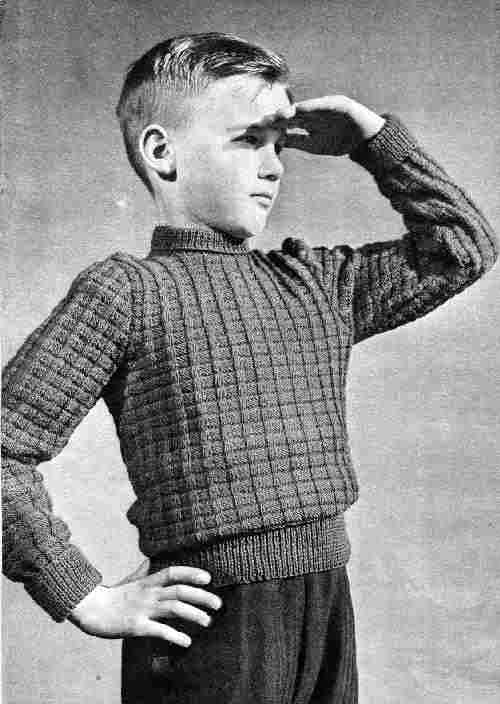
Figure 1.--This Dutch boy in a 1952 magazine wears a turtle-neck sweater with a relative small necvk. He also appears to be wearing warm corduroy trousers. |

|
HBC has developed considerable information on Dutch boys clothing, but we do not yet have much information on corduroy. We do not yet have any written reportsm
but believe it was a popular fabric for boys clothes, especially for pants. One 1952 magazine ad for heavy sweaters show a boy wearing wide weal cord trousers. A Dutch reader reports that corduroy was popular and commonly worn in the Netherlands into the 1970s. By the 2000s, however, only older men wear cord pants.
wear pants of this material. While popular rib-cord, small weal, wide weal, all types were worn. One reader reports, "In the late-1960s and early 70s, I had blue and yellow coloured small weal pants. In the summer my mother made short shorts from the winter pants, not simply cut-offs but with a neat hem."
Warm cord pants with sweaters appear to have been popular fall and winter wear. One 1952 magazine ad for heavy sweaters show a boy wearing wide weal cord trousers.
There are several words in Dutch for corduroy. "Manchester" is the word for the heavy material kind of corduroy. "Ribfluweel" (fluweel means velvet) is used for the velvet kind of corduroy. "Ribcord" is used for corduroy too. The English word "corduroy" is a common word in Dutch also.
A Dutch reader reports, "When I grew up in the 1930s and 40s in the Netherlands corduroy was worn mostly by gardeners, street laborers, farmers, and coal-hands (guys who would
transport heavy bags with coal for fuel--they always wore black corduroy trousers
and vests). So it appeared to be a working-class garment, but curiously some of the "higher-class" men would be wearing also corduroys for sports or leasure. My father
used to wear corduroy breeches with a leather bottom. The Dutch Boy Scouts always were clad in brown corduroy shorts as part of the uniform (blue in color for the sea scouts). Also "De Jonge Wacht", a Catholic group, wore black corduroy shorts like the Hitler Jugend in Germany. Boys in reformatories were dressed in khaki-colored corduroy pants and jackets. The corduroy at that time was of the best quality, made to last a long time." A Dutch reader reports that corduroy was popular and commonly worn in the Netherlands into the 1970s. By the 2000s, however, only older men wear cord pants. A Dutch reader writes, "Corduroy indeed seems to have lost its appeal. It is still available though, but the quality is not the same anymore. Most of the stuff is now made in Bangladesh or the Dominican Republic."
A Dutch reader tells us, "In the Netherlands the material became popular perhaps 100 years ago. Laborers, farmers, gardeners and coalminers used to wear heavy corduroys, called manchester. Interestingly, the middle classes did not wear cords, perhaps on account of the perception that it was mostly a lower class tradition. At the same time, upper class people and artists again would wear corduroy without making their trousers dirty. My own father, who was an engineer, often wore a corduroy suit. That was totally accepted. And of course, the Dutch boy scouts always wore corduroy shorts."
While popular rib-cord, small weal, wide weal, all types were worn.
HBC has developed considerable information on Dutch boys clothing, but we do not yet have much information on corduroy. We do not yet have any written reportsm
but believe it was a popular fabric for boys clothes, especially for pants.
Dutch boys wore both long and short cord oants. Presumably until after World War II, cord knickers were also worn. One reader reports, "In the late-1960s and early 70s, I had blue and yellow coloured small weal pants. In the summer my mother made short shorts from the winter pants, not simply cut-offs but with a neat hem." The cord shorts worn in the 1960s and 70s were often cut quite short. Many were worn with belts.
Presumably there were also cord jackets, but we do not have information at this time.
Corduroy was used for various Dutch youth groups an institutions.
The Dutch Scouts have worn cord shorts. Brown shorts were common, but other colors were also used. Dutch Sea Scouts wore blue shorts. A Dutch reader mentions the Arbeiders Jeugd Centrale (AJC), a communist/socialist organization for boys and girls from working class families that was active in the Netherlands during the 1930s before World War II. They did not have a very elaborte uniform. They usually wore blue shirts and a red neckerchief and the boys often brown corduroy long or short pants, perhaps to emphasize their prolitarianism. Also "De Jonge Wacht", a Catholic group, wore black corduroy shorts like the Hitler Jugend in Germany.
Boys in a state reformatory before World War II were dressed in brown corduroy suits (jackets and long trousers). This gave broen crduroy suits rather a bad image i the Netherlands. Corduroy is called "manchester" in Dutch. A Dutch reader remembers his father telling him , "If you don't behave, I'll send you to the Manchester School". He was not aware that the Manchester School was a very respected political and
economical party in 19th century England.
Navigate the Boys' Historical Clothing Web Site:
[Introduction]
[Activities]
[Biographies]
[Chronology]
[Clothing styles]
[Countries]
[Bibliographies]
[Contributions]
[Essays]
[FAQs]
[Glossaries]
[Images]
[Links]
[Registration]
[Tools]
[Boys' Clothing Home]
Navigate the Boys' Historical Clothing Dutch pages:
[Return to the Main cord page]
[Return to the Main Dutch sweater style page]
[Maiken Island]
[Dutch choirs]
[Dutch scouts]
[Dutch school uniform]
[Dutch boys bangs]
Navigate the Boys' Historical Clothing national pages:
[Return to the Main country corduroy page]
[Return to the Main corduroy page]
[Return to the Main Dutch material page ]
[Australia]
[Belgium]
[England]
[France]
[Germany]
[Ireland]
[Italy]
[Japan]
[Korea]
[Mexico]
[The Netherlands]
[Scotland]
[United States]
